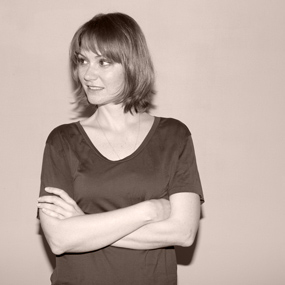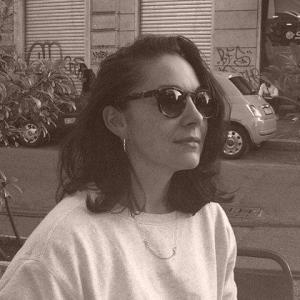Villa Borsani and archives now open to the public
The Legacy of Osvaldo Borsani
-
The Villa Borsani
Photo © Bea de Giacomo for L'AB/Pamono
-
The Villa Borsani
Photo © Bea de Giacomo for L'AB/Pamono
-
Osvaldo Borsani at work with his family
Photo © Ugo Mulas; courtesy of The Borsani Archive
-
P40 Chair by Osvaldo Borsani for Tecno
Courtesy of The Borsani Archive
-
D70 Sofa by Osvaldo Borsani for Tecno
Courtesy of The Borsani Archive
-
P110 "Canada" Lounge by Osvaldo Borsani for Tecno
Courtesy of The Borsani Archive
-
The Villa Borsani
Photo © Bea de Giacomo for L'AB/Pamono
-
The Villa Borsani
Photo © Bea de Giacomo for L'AB/Pamono
-
The Villa Borsani
Photo © Bea de Giacomo for L'AB/Pamono
-
The Villa Borsani
Photo © Bea de Giacomo for L'AB/Pamono
-
The Villa Borsani
Photo © Bea de Giacomo for L'AB/Pamono
-
The Villa Borsani
Photo © Bea de Giacomo for L'AB/Pamono
-
The Villa Borsani
Photo © Bea de Giacomo for L'AB/Pamono
-
Valeria Fantoni-Borsani
Photo © Bea de Giacomo for L'AB/Pamono
-
The Borsani Archives
Photo © Bea de Giacomo for L'AB/Pamono
-
The Borsani Archives
Photo © Bea de Giacomo for L'AB/Pamono
-
The Borsani Archives
Photo © Bea de Giacomo for L'AB/Pamono
-
Tommaso Fantoni
Photo © Bea de Giacomo for L'AB/Pamono
Every lover of vintage modern furniture will recognize the P40, designed in 1955 by Osvaldo Borsani. Everything about this iconic chair—the sleek silhouette, the articulated frame, the sculpted foam components—expresses the spirit of its time. And still the P40 lives on today; continuously in production with the original manufacturer, Tecno, and installed in institutional and private collections around the world.
Given the tremendous success of this product, which is just one among many, it is surprising that appreciation for Osvaldo Borsani's massive talent is limited primarily to specialists in the field, particularly in contrast to many of his contemporaries, such as Gio Ponti and Achille Castiglioni. New efforts by Borsani’s heirs—his daughter, Valeria Fantoni-Borsani; his grandson, Tommaso Fantoni; and his grand-nephew, Federico Borsani—may, however, help to bring the designer into a new light.
“My grandfather was a true innovator. He was instrumental in bringing modernism to Italy. At the same time, he remained committed to the Italian tradition of fine craftsmanship,” explains Tommaso. “In Osvaldo’s work, you can see the best of 20th-century Italian design—from the soulfulness of pre-war artisanal production to the high-tech innovations that followed World War II—and we want to share this legacy with a wider audience.” To achieve this mission, Tommaso and his relatives have opened the designer’s archive and the family home—Villa Borsani—to the public.
Villa Borsani, a rare surviving example of Osvaldo Borsani’s architecture, is located in the small town of Varedo, just north of Milan. It has sat unoccupied since the final resident, Carla Borsani, wife of Fulgenzio, the designer’s twin brother and business partner, passed away five years ago. Because the home has remained within the family from the beginning, very little has changed over the last 65 years. And for the most part, this treasure of design history is unknown and unseen—a lost opportunity for design lovers, because Villa Borsani offers a fascinating blend of styles bridging the two complementary approaches that defined Italian design in the 20th century: traditionalism and modernism. To see Villa Borsani is, in fact, to understand Osvaldo Borsani’s place in Italian design history.
Osvaldo was born in 1911 to a family of highly respected furniture makers. His father, Gaetano, owned and operated a well known company—Atelier di Varedo—that crafted sophisticated, bespoke furnishings and interiors, typically in an Italian version of the Art Deco style. Gaetano expected his sons to continue in his footsteps, so, as a teenager, Osvaldo worked in the family business while attending art school. “If there is one thing my grandfather learned from his father, it was quality,” Fantoni says. “Gaetano would not release anything from the atelier that did not meet the highest of standards. There are family stories about Gaetano calling customers to explain that their orders would need more time, because he wanted to start from scratch. I’ve heard that he would sometime smash pieces of furniture he believed to be sub-par.”
High passions aside, the Borsanis lived a genteel upper-middle class life, and Osvaldo was well educated. In the late 1920s, this education exposed him to the modernist movement sweeping through Europe, and he frequently traveled north to see the work of his heroes, such as Le Corbusier, Marcel Breuer, and Walter Gropius. These encounters with modernism set him on a path that ultimately changed the way his family produced furniture, and positioned him as one of his country’s earliest and strongest advocates for progressive design, both aesthetically and technologically.
In 1933, while studying architecture at the Politecnico di Milano, Osvaldo was awarded the silver medal at the fifth Triennale exhibition for his rationalist-inspired project, Casa Minima, an architectural proposal for the future of housing. This marked a substantial turning point in the young designer’s career: the beginning of his rise to fame. Following this success at the Triennale, Osvaldo was given greater influence over the family business and greater liberty to experiment with avant-garde design ideas. Seeking a new contemporary design language during these years (just before and after WWII), he invited a number of artists to collaborate with him on interior and furniture designs. These artists—including Lucio Fontana, Agenor Fabbri, Fausto Melotti, Roberto Crippa, Aligi Sassu, Arnaldo and Giò Pomodoro, and others—would become his lifelong friends as well as some of Italy’s most celebrated creative talents of the 20th century. “Even within this milieu of vanguards,” Tommaso says, “Osvaldo was called ‘the American’ because his ideas were agreed to be the most innovative of the day.”
By the early 1950s, as the economic potential for industrially produced furniture was vastly expanding, Osvaldo’s passion for modernism found fertile, new ground: In 1953, he partnered with his brother to form the design and manufacturing company Tecno. Osvaldo, his daughter Valeria, and his son-in-law Marco Fantoni were the company’s sole designers for more than 30 years, until the 1980s, when designers like Gae Aulenti, Eugenio Gerli, Emilio Ambasz, Norman Foster, and others began to contribute. Tecno became famed for its research-based, technological approach, which spawned a number of innovative modernist icons—not only the P40 Lounge, but also the D70 Sofa, the P110 “Canada” Chair, and the more recent Nomos Table by Norman Foster, to name but a few.
Osvaldo designed and built Villa Borsani between 1939 and 1945, precisely during his transitional phase, moving away from his father’s traditionalism and toward the new modernism. As a result, both the interior and architectural designs include characteristics of both styles, while celebrating a particularly Italian, highly civilized lifestyle. Intended to be a multi-generational home for Gaetano, his wife Maria, and the twin sons (who were all still working together in the family atelier), Villa Borsani is generously proportioned: an 800-square-meter, two-story house set within 3,000 square feet of gardens, enclosed within a high, ivy-covered wall. The brick-and-stucco architecture of the house, along with the garden’s wisteria-covered pergola, expresses the clean rectilinearity of modernism, but the elongated verticality of the windows and doors—not to mention the rich, handcrafted wood mullions and casings—are inspired more by the movement’s early pioneers, such as Frank Lloyd Wright, than by, say, Le Corbusier. This emphasis on height, no doubt, is better suited to the Italian climate, as are the heavily shaded grounds and the modest but picturesque swimming pool—where Valeria, as a child, learned to swim.
In the interior of the home, quality-obsessed Osvaldo embraced the sumptuous materials and decorative detailing of the pre-war Italian Deco style, but filtered these elements through his own blossoming modernist sensibility: the patterns in the stucco ceilings are straightforward lines and squares; the parquet floors a simple grid; while the alternating colors in the marble floors form a repeating, unfussy wave, reminiscent of Jean Arp’s forms. One of the most striking features of the interior is the crisscrossing marble staircase, which pairs a solid walnut handrail with tapered support slats made of tempered glass. The work of his many artist friends can be found throughout the villa. Even though he did not shy away from layered embellishments in the interior of his eponymous villa, Osvaldo nevertheless achieved an effortless airiness in keeping with his progressive tendencies.
The living room of Villa Borsani presents a particularly rich assemblage of furnishings: a concentration of highlights from the designer’s long career (shown at the top of this page). In one corner, you find a marble-intarsia table, inlaid with quirky playing-card motifs, surrounded by six handcrafted walnut chairs upholstered in black-and-white striped fabric. This set was designed by Osvaldo and artisanally produced by the family’s atelier in the 1940s. On the opposing wall, you can’t miss the incredible ceramic fireplace, featuring hand-formed mythical warriors on horseback, created in 1948 by longtime friend and collaborator, the ever-original Lucio Fontana (whose interventions can be found on a number of furniture pieces in the house). The simple but elegant lighting fixtures, on the ceiling and framing the fireplace, were created by another perennial collaborator, Dutch-Italian architect Guglielmo Ulrich, who has recently been gaining traction on the collector market. Occupying the center of the room is a grouping of furniture that was added decades after the house was built, all produced by Osvaldo’s manufacturing company Tecno: a set of his P110 chairs, designed in the 1960s; a sofa and armchairs designed by Valeria in the 1970s; and a glass and wood coffee table designed by Valeria’s husband, Marco, also in the 1970s. This room testifies to the roots and relationships most formative to Osvaldo’s prolific design life, and the multigenerational project that is Villa Borsani.
In readying the property for public access, Tommaso—an architect in his own right who worked for years in the office of Norman Foster before recently opening his own practice, Tomo Architects, in Milan—decided to move the substantial Borsani archive to the villa’s garden house. Encompassing thousands of documentary materials—photographs, sketches, gouaches, blueprints, business records, and correspondence—the archive currently resides in a small converted office space, just one crowded room in the headquarters of a now defunct chemical company a few blocks from the villa. The mission is to coalesce all of the family’s holdings within the compound as a means of assisting students, academics, and collectors interested in researching Borsani’s work, while encouraging the world to remember his significance.
This project provided Tommaso with a renewed opportunity to reflect on his family’s legacy and the influence his grandfather has had on his own practice. “I have learned a lot from grandfather,” he explains. “Whether working at the scale of a building or a single piece of furniture, Osvaldo embraced technological and ideological advances, but always respected the Italian tradition of bespoke craftsmanship and refined lines. While Osvaldo played a vital role in the formation of modernism in Italy, his true legacy lies in the way he balanced rationality and elegance, always with the aim of producing the best possible quality. Achieving such timelessness should be the goal of every designer.”
Villa Borsani is reachable by train from Cadorna Station in Milan with Ferrovie Nord taking the line S4 direction Camnago to Varedo, in about 20 minutes.
-
Text by
-
Wava Carpenter
After studying Design History, Wava has worn many hats in support of design culture: teaching design studies, curating exhibitions, overseeing commissions, organizing talks, writing articles—all of which informs her work now as Pamono’s Editor-in-Chief.
-
-
Photos by
-
Bea De Giacomo
Based in Milan, Bea is a charming and talented photographer whose clients include Wallpaper*, Hunter, Interview, DePadova, and Yoox. Since 2011, she's also served as photo editor at Vice Italy.
-
More to Love
Italian Executive Office Chair by Osvaldo Borsani for Tecno, 1960s
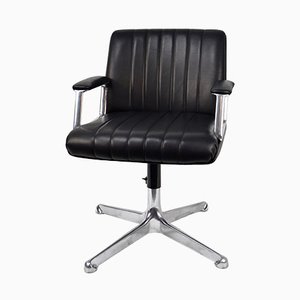
Vintage T90 Writing Desk by Osvaldo Borsani for Tecno

Italian Walnut Coffee Table by Gaetano Borsani, 1930s
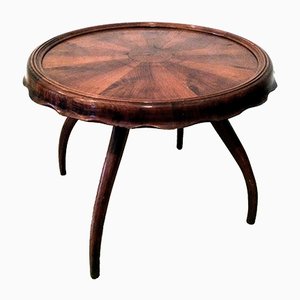
Modus Office Chair by Osvaldo Borsani for Tecno, 1975
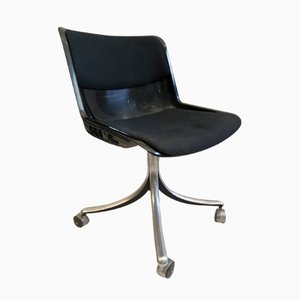
Model T96 Executive Rosewood Desk by Osvaldo Borsani for Tecno, 1950s

Italian Pedestal Dining Table by Osvaldo Borsani, 1950s

Walnut Writing Desk by Borsani for Tecno, 1960s
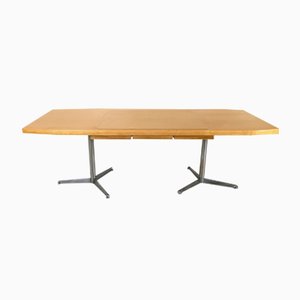
Vintage Model T41 Dining and Coffee Table by Osvaldo Borsani for Tecno

Handmade Solid Oak Table from Atelier Borsani, 1940s
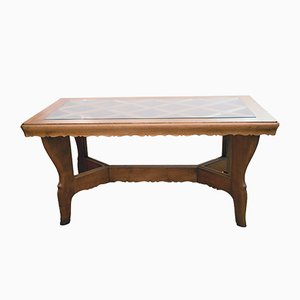
Vintage T69 Table by Eugenio Gerli and Osvaldo Borsani for Tecno

Italian Sideboards by Osvaldo Borsani, 1940s, Set of 2
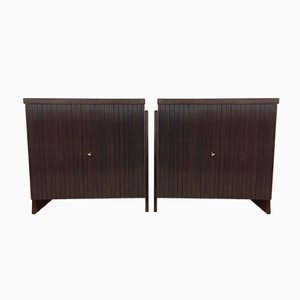
Italian T95 Desk by Osvaldo Borsani for Tecno, 1952

Italian Table in Mahogany by Osvaldo Borsani, 1960s
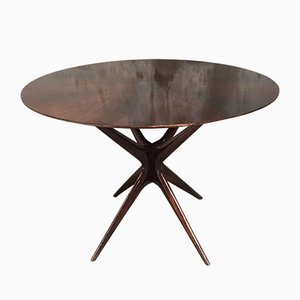
Italian Curved Cherry Wall Mirror by Osvaldo Borsani, 1950s

Modus Visitor Chairs by Osvaldo Borsani for Tecno, 1975, Set of 2

Black Leather Swivel Executive Chair by Osvaldo Borsani for Tecno, 1968
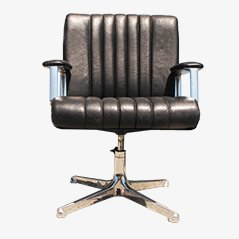
T 160 Executive Desk by Osvaldo Borsani for Tecno

Modus Office Chairs by Osvaldo Borsani for Tecno, 1972.

Italian Desk with Drawer Container by Osvaldo Borsani
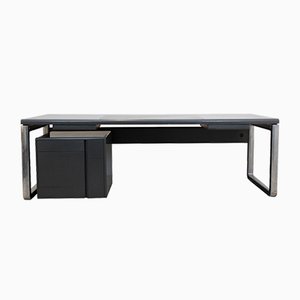
Modus 4 Chairs by Osvaldo Borsani, 1973, Set of 3

Vintage Steel & Smoked Glass Dining Table by Osvaldo Borsani for Roche Bobois

Italian P40 Lounge Chair by Osvaldo Borsani for Tecno, 1956

Italian P40 Armchair by Osvaldo Borsani for Tecno, 1950s
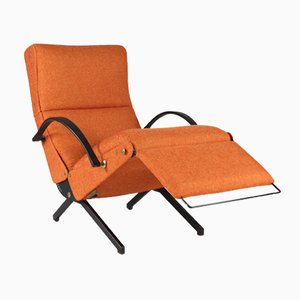
Italian Bar Cabinet by Osvaldo Borsani, 1950s
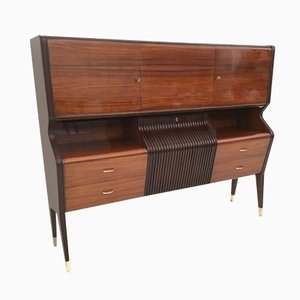
Cognac Leather Desk Chairs by Osvaldo Borsani for Tecno, 1960s, Set of 2
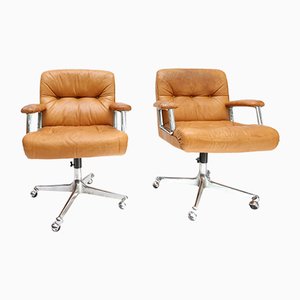
Modus Stool by Osvaldo Borsani for Tecno




















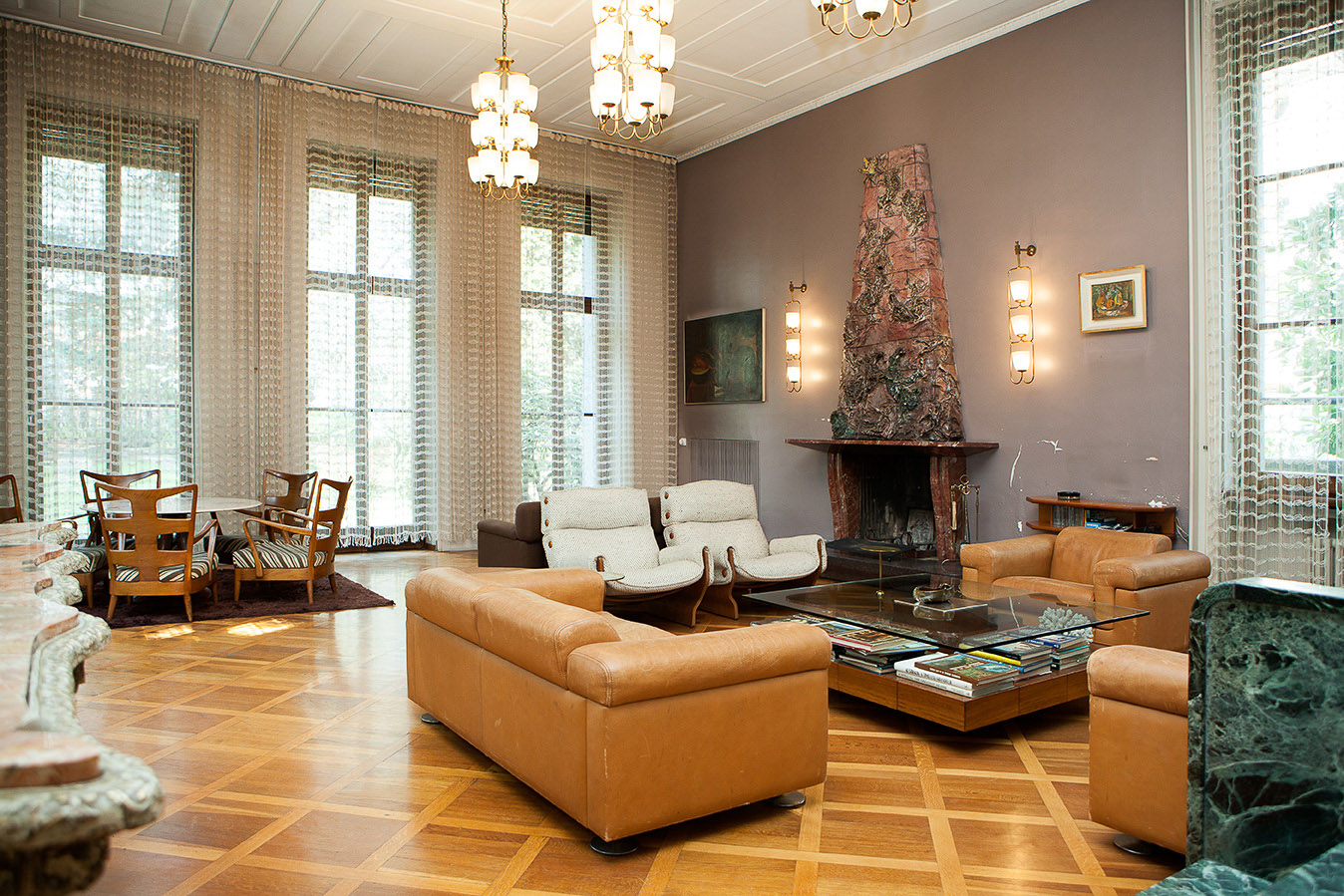 The living room of Villa Borsani
© Bea de Giacomo for L'AB/Pamono
The living room of Villa Borsani
© Bea de Giacomo for L'AB/Pamono
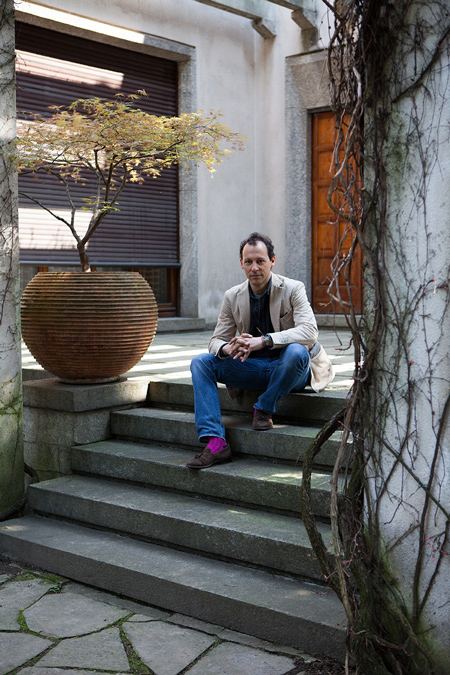 Tommaso Fantoni
© Bea De Giacomo for L'AB/Pamono
Tommaso Fantoni
© Bea De Giacomo for L'AB/Pamono
